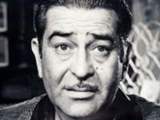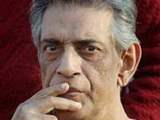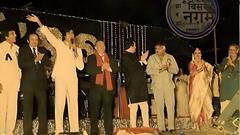No prints of many epic films: Archivist P.K. Nair (Interview)
As the world celebrates 100 years of Indian cinema, veteran archivist P.K. Nair reveals that there are no prints of India's first talkie "Alam Ara" made in 1931 or indeed of many epic films made before the 1950s.
Published: Thursday,Apr 18, 2013 13:20 PM GMT-06:00

As the world celebrates 100 years of Indian cinema, veteran archivist P.K. Nair reveals that there are no prints of India's first talkie "Alam Ara" made in 1931 or indeed of many epic films made before the 1950s.
The former director of the National Film Archive of India (NFAI) discloses the sad fact that only "leftovers" could be archived as films made before the 1950s were either destroyed or just vanished.
The first Indian film "Raja Harishchandra" came out in 1913 but NFAI was set up more than five decades later in 1964. Most masterpieces during that time are now lost forever. Only the first and last part of "Raja Harishchandra", a silent film that was India's first feature film, could be restored.
"We don't have 'Alam Ara' as people who made the film... didn't take care of the print," Nair, 80, told IANS.
"We don't have the archive of many epic films. Whatever was available that time, we took all of them. It is not the question of whether the ideal film is selected or not," he added.
Nair was in the capital recently for an event to celebrate 100 years of Indian cinema at Jawaharlal Nehru University.
According to Nair, who worked for about 26 years with the Pune-based NFAI, 70 percent of Indian films made before 1950 were not available for archiving.
"All gone, destroyed and vanished, so there were only leftovers that were archived. Before 1950, we collected whatever films came our way; so it was not much of a selection... Later, the selection happened post the 1950s era when the National Film Awards came in (1954)... I don't think we have collected all films," he added.
The Indian film industry, which turns 100 this year, produces about 1,000 films a year and Nair feels it is impossible to archive all of them.
"The problem now is that we make such large number of films that it is impossible to keep all films; so whatever film we feel nice, we archive it," he said.
Born in 1933 in Thiruvananthapuram, Kerala, Nair's interest in films began with 1940s Tamil mythological dramas such as "Ananthasayanam" and "Bhakta Prahlada".
His stint with the NFAI started in 1965 as assistant curator; 17 years later, in 1982, he became the director.
When he retired in April 1991, he had collected over 12,000 films, of which 8,000 are Indian. These include the works of legendary filmmakers such as Satyajit Ray, Ritwik Ghatak, Mrinal Sen, V. Shantaram, Raj Kapoor and Guru Dutt.
Nair also archived films of international stalwarts like Ingmar Bergman, Akira Kurosawa, Andrzej Wajda, Miklos Jancso, Krzysztof Zanussi, Vittorio De Sica, and Federico Fellini.
He is happy with the current generation of filmmakers who are showing interest in archiving their work.
"Today, Indian cinema is progressing and this is what needs to be done. Indian cinema is vibrant like any other cinema; so if people try to do something new, something that audience is not familiar with, then only they can catch and get the audience, otherwise it's very difficult."
He also seems impressed with Bollywood movies.
"There are many Bollywood films today that have the potential to get archived. Current Bollywood films have extended the possibility of cinema much more than what used to happen earlier. So in that sense archiving part of it is also getting more useful. More and more people are getting into the archiving part... This is a great thing."
What are the significant changes he witnessed in Indian cinema?
"We started with a silent film, then we were all about mythological films. Later, we moved to stories from history. The next part was called contemplation, which included research.
"When the talkies came, they went back to mythological films and remade many movies of the past. It continued to be a major part of that kind of production till independence (1947)," he said.
Post independence, it was mostly about family bonding followed by stories of migration from village to cities.
"Later it became the Amitabh Bachchan period of the Angry Young Man. That phase continued for two-three decades. Then there were stories about social changes. This is the evolution of Indian cinema we talk about in a nutshell," he said.
Your reaction
 Nice
Nice Awesome
Awesome Loved
Loved LOL
LOL OMG
OMG Cry
Cry Fail
Fail





















Comments (0)